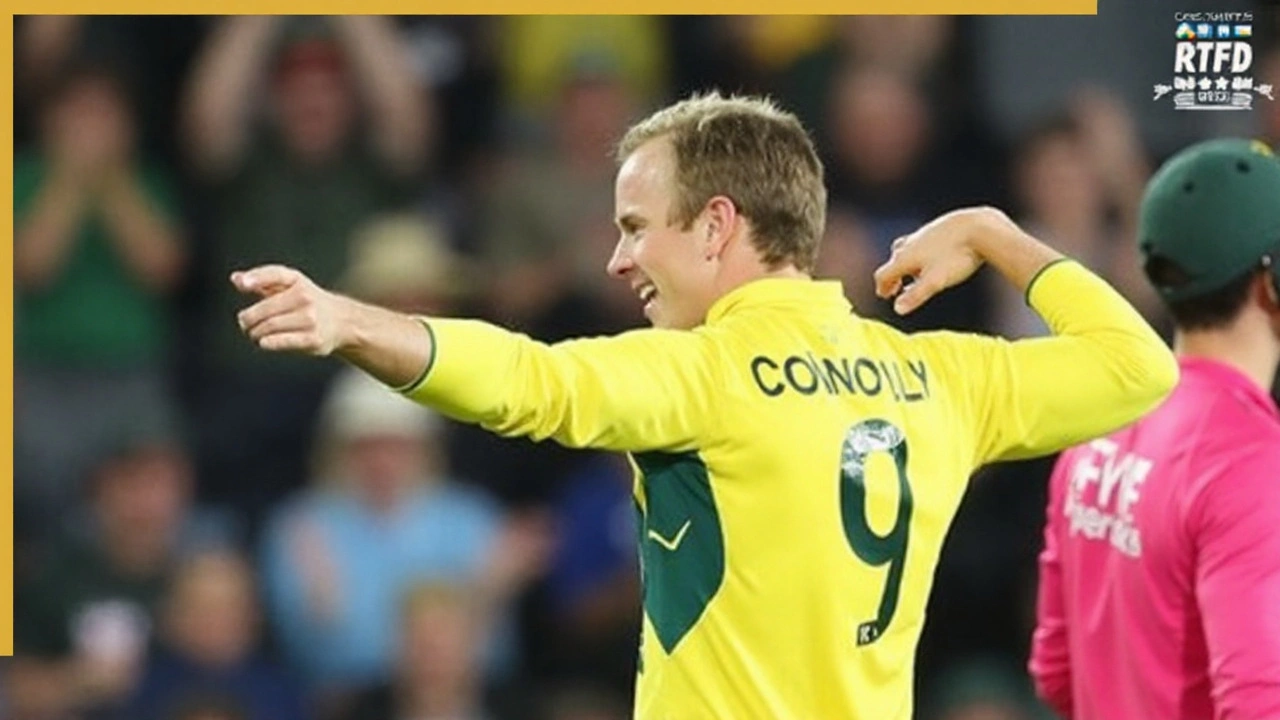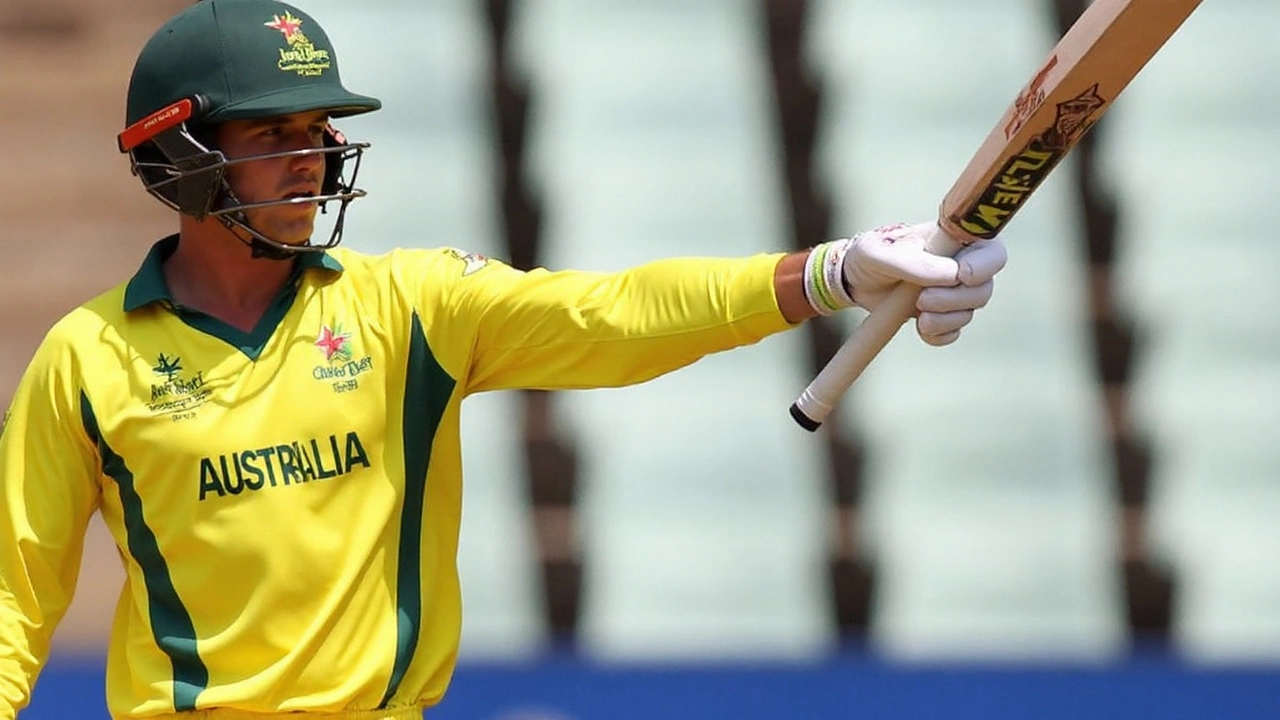Short ruled out; Connolly called up for knockouts
Australia have lost a first-choice opener days before a major semi-final. Matthew Short is out of the ICC Champions Trophy with a calf injury, and travelling reserve Cooper Connolly has been approved as his replacement for the knockout stages.
Short hurt his calf while fielding in Lahore against Afghanistan on Friday, February 28. He still came out to bat and swung hard for a 20 off 15, but his movement was clearly limited. Heavy rain ended the match early, and the washout sealed Australia’s place in the semi-finals.
There was little optimism in the camp even on the night. Captain Steve Smith said the turnaround was too tight. In his words, Short “wasn’t moving very well” and would be “struggling” to make it back in time. Calf strains often need at least a couple of weeks; Australia have had only days.
The ICC’s Event Technical Committee signed off on the change on Monday, March 3. Connolly, 21, is a left-handed batter and left-arm spinner who was already with the group as cover. He has six senior appearances for Australia, including three ODIs after debuting on tour in England.
Short’s absence stings because of how he started this tournament. In the opener against England, he hammered 63 off 66 and set up a chase that Josh Inglis and Alex Carey closed out. That game settled him at the top and gave Australia the powerplay punch they wanted in these conditions.
Now the semifinal brings a quick shift: from Lahore to Dubai, from group tempo to knockout pressure. Australia face India on Tuesday in Dubai, the match they had to plan for as soon as the draw fell their way. If it had been New Zealand, they would have stayed in Lahore. Instead, it’s a flight, rehab for a battered group, and a key hole to fill.
Who takes Short’s spot? The front-runner is Jake Fraser-McGurk, who was called up earlier when Mitchell Marsh went down. He offers a near like-for-like powerplay style: fast hands, hard swings in the arc, and no fear of the new ball. If the selectors prefer more balance, Aaron Hardie is the other route, giving seam overs and middle-order flexibility, but that would shuffle roles around Travis Head, Inglis, and Carey.
Connolly’s addition changes the mix in a different way. Australia already had legspin in Adam Zampa, wrist-spin cover in Tanveer Sangha, and offspin from Glenn Maxwell. Connolly brings left-arm angle and more grip through the middle. In Dubai, where pitches can slow up and footprints matter late at night, that variety is handy—even if he doesn’t walk straight into the XI.
Conditions in Dubai tend to split the night. The first half can be dry and a touch tacky; the second half often brings dew that flattens things out. That affects how captains value the toss, and it shapes bowling plans. Protecting the ball from moisture, speed between overs, and fielders’ handling become as important as yorkers and variations.
Australia’s batting balance will likely hinge on how they want to use Travis Head. He’s been the tone-setter. With Short out, Head’s partner becomes either a fellow dasher in Fraser-McGurk or a steadier option that lets Head tee off alone. Either way, the first 10 overs are key. India, especially in this region, squeeze with spin as early as they can. Australia need clean rotations through the middle so Maxwell and Marnus Labuschagne (if picked) aren’t bogged down before the last surge.
Smith has backed the squad depth. “We’ve got a few guys there to come in and we’ll be able to fill a job,” he said. That’s true, but Short’s specific skill—quick boundary access in the powerplay—doesn’t grow on trees. Replacing intent is one thing; replacing impact is another.
For Connolly, this is a sharp escalation. He came in as a reserve with the message to be ready, bowl hard in nets, and soak up roles. Now he’s officially in the 15 and part of the decisions. Even if he doesn’t play, his presence lets Australia lengthen the bowling in training and keep match-ups fresh. Left-arm spin into the breeze, over the wicket angling into pads, and the option to drag pace from the surface—those are levers Australia didn’t have as much of until now.
The other side of this semi-final is familiar. Australia and India have shared plenty of knockout nights. Not long ago, Australia walked into a packed Ahmedabad and won an ODI World Cup final. That memory is still loud in both dressing rooms. It doesn’t decide Tuesday, but it sits there when the pressure spikes.
Selection puzzles don’t end at the top. Maxwell’s bowling workload matters if Australia go with a bat-heavy XI. Zampa’s control is non-negotiable. If dew hits, seamers like Nathan Ellis and Sean Abbott need dead-eye execution at the death. And if Australia expect the pitch to tire, they may want two wristspinners or a left-arm option through the middle to break stands.
Medically, the call on Short is straightforward. Calf strains are notorious for setbacks when pushed early. Rushing a return in a tournament knockout is risky. Australia took the conservative route, freed up the slot, and kept the dressing room from guessing until the toss.
Travel and recovery also play a part. The squad had to manage a rain-hit game, a flight, and new routines within a few days. Training in Dubai will be more about clarity than volume: short bowls for the quicks, range-hitting for the top order, and sharp fielding under lights to get used to the glare and the skidding ball.
As for roles, here’s what Tuesday could look like if Australia stick to like-for-like changes: Head and Fraser-McGurk to open, Smith to anchor at three, Labuschagne or Inglis at four depending on balance, Maxwell floating to attack match-ups, and the keeper’s slot between Inglis and Carey decided by bowling plans and batting order. The tail lengthens or shortens based on whether Hardie or a specialist bowler gets the nod.
Australia won’t overcomplicate it. Early wickets with the new ball, a squeeze in overs 11–40, and enough boundary bursts in the last 10—that’s the script. What Short gave them was a head-start in that plan. Without him, they must create it through shape and tempo, not just ball-striking.
The ICC green light for the replacement is more than paperwork. It is a nudge toward flexibility. If the pitch shows a crust of grip, Connolly is a real option. If not, his inclusion frees Maxwell to stay fresher at the back end with the bat, knowing overs are covered elsewhere.
So where does that leave the XI? Two pathways are on the table:
- Like-for-like aggression: Head, Fraser-McGurk, Smith, Labuschagne, Maxwell, Inglis (wk), Hardie, Abbott, Zampa, Ellis, Johnson.
- Extra spin variety: Head, Fraser-McGurk, Smith, Inglis (wk), Maxwell, Carey, Hardie, Zampa, Sangha or Connolly, Abbott, Ellis.
Those are sketches, not certainties. The final call will weigh the surface, the toss, and India’s middle-order match-ups. Australia have kept options open on purpose all tournament.
One more note on rhythm: Short’s 63 against England didn’t just fill a scorecard; it set a template. Australia chased with calm because the asking rate never ran away. Rebuilding that template with different names is the challenge now. Head can do it. Fraser-McGurk can help. Maxwell can break a chase in 15 balls. But it starts with belief in roles, not names.
Australia’s updated squad for the knockouts is locked: Steve Smith (capt), Sean Abbott, Alex Carey, Cooper Connolly, Ben Dwarshuis, Nathan Ellis, Jake Fraser-McGurk, Aaron Hardie, Travis Head, Josh Inglis, Spencer Johnson, Marnus Labuschagne, Glenn Maxwell, Tanveer Sangha, Adam Zampa.
Australia know the stakes in Dubai. They’ve navigated injuries all tournament, leaned on depth, and kept their white-ball habits tight. Short’s injury is a blow. The semi-final doesn’t pause for it. The ball will be new, the lights bright, and the margins thin. They’ll take their swing.

What it means for Australia vs India in Dubai
- Powerplay: Australia need 40-plus in the first 10 without chaos. Head’s start is vital; Fraser-McGurk’s shot selection sets the tone.
- Spin middle: Zampa’s control and Maxwell’s offspin manage the middle. Connolly’s left-arm option is a horses-for-courses call if grip shows.
- Dew watch: If the second innings is damp, cutters and hard lengths carry more value than slower, wider plans. Fielding basics under dew—clean pickups, two hands to the ball—matter.
- Finishing: Australia want one set batter batting past 40 overs. Maxwell or Head finishing the job beats a parade of cameos.
The stage is set for Tuesday. Winner goes to the final later this week. For Australia, the job is simple on paper: absorb the Short-sized hit, keep the plan clean, and let the depth show when it counts.
